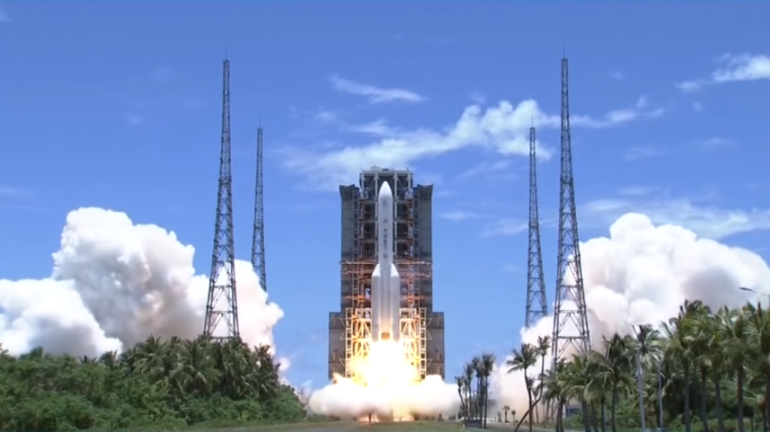The official Chinese news agency "Xinhua" announced the success of the "Tian-Win-1" space mission, which was launched to Mars on July 22 last year, completely after its vehicle managed to land safely on the surface of the Red Planet. This makes China The first country in the world to succeed in a Martian landing on the first attempt.
First time
It is known that the space missions of Mars usually start in stages, as the first experiments begin until the state succeeds in installing a satellite (Orbiter) orbiting the planet to study it and determine the best future landing sites, and then work begins on landing a fixed vehicle to its surface (Lander), Then a Rover.
But it is the first time in the history of spaceflight that these three stages have been carried out in one mission, in which China has succeeded, and for this reason, its success means great progress in technological dealing with Mars.
Simulation of the arrival of the Chinese vehicle to the Earth of Mars (social media)
The mission reached its orbit around Mars in February, and then began to study the planet and prepare the stationary craft to land in an area called Utopia Plantia, located north of the planet within the largest impact basin on its surface, with a width of about 3300 km.
And landing the spacecraft was not easy, and the team authorized to manage it from the Chinese National Space Administration relied on a mechanism similar to that followed by the US Space and Aviation Agency (NASA), as the spacecraft is armed with a protective shield that protects it while descending through the atmosphere.
After that, parachutes and propellant missiles are used in reverse to slow its descent until it reaches the planet Earth, and after stabilizing the stationary vehicle, a small robotic vehicle named "Zhurong" comes out of it.
Mission "Tian-Win-1" launched on July 22, 2020 (Social Media)
Heavy task
And because it is the first attempt of its kind in China, "Tian-Win-1" is the most intensive Martian work mission, as it carried 13 scientific instruments divided between the satellite above and the rover below.
This group of tools aims, in 90 Martian days, which is the duration of their work, to complete a comprehensive study of the climate, geology, environment and magnetosphere of the Red Planet, in order to answer the question that has long puzzled experts in this field: Was Mars a viable planet like Earth someday?
And if so, what happened to him?
On the other hand, the rover is specifically interested in searching for the ice lying below the surface of the planet, in an attempt to build the most accurate possible calculations of the real amount of water in Mars, and this could help China, and a number of countries, in their plans to build stable Martian colonies in the far future.

